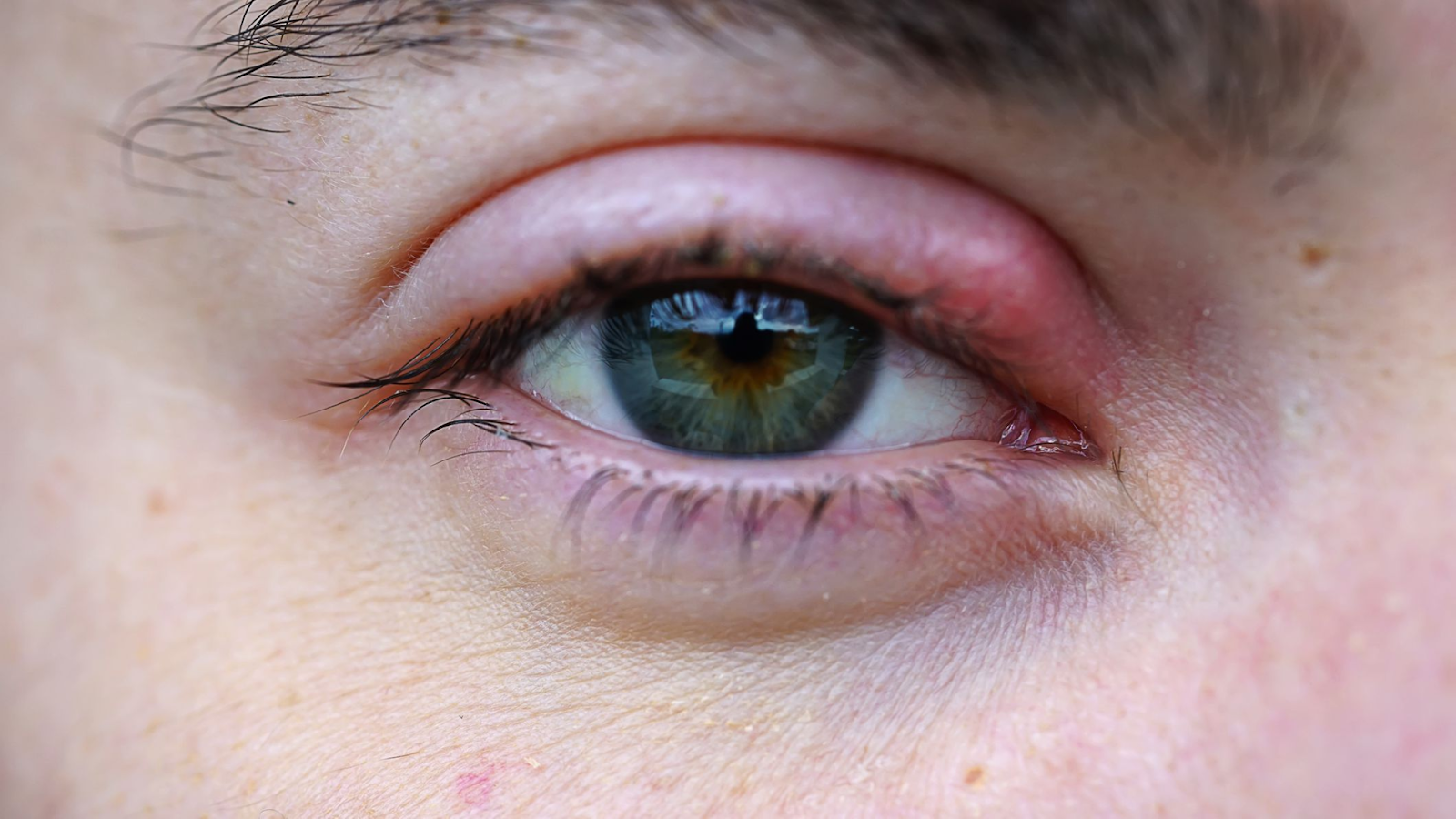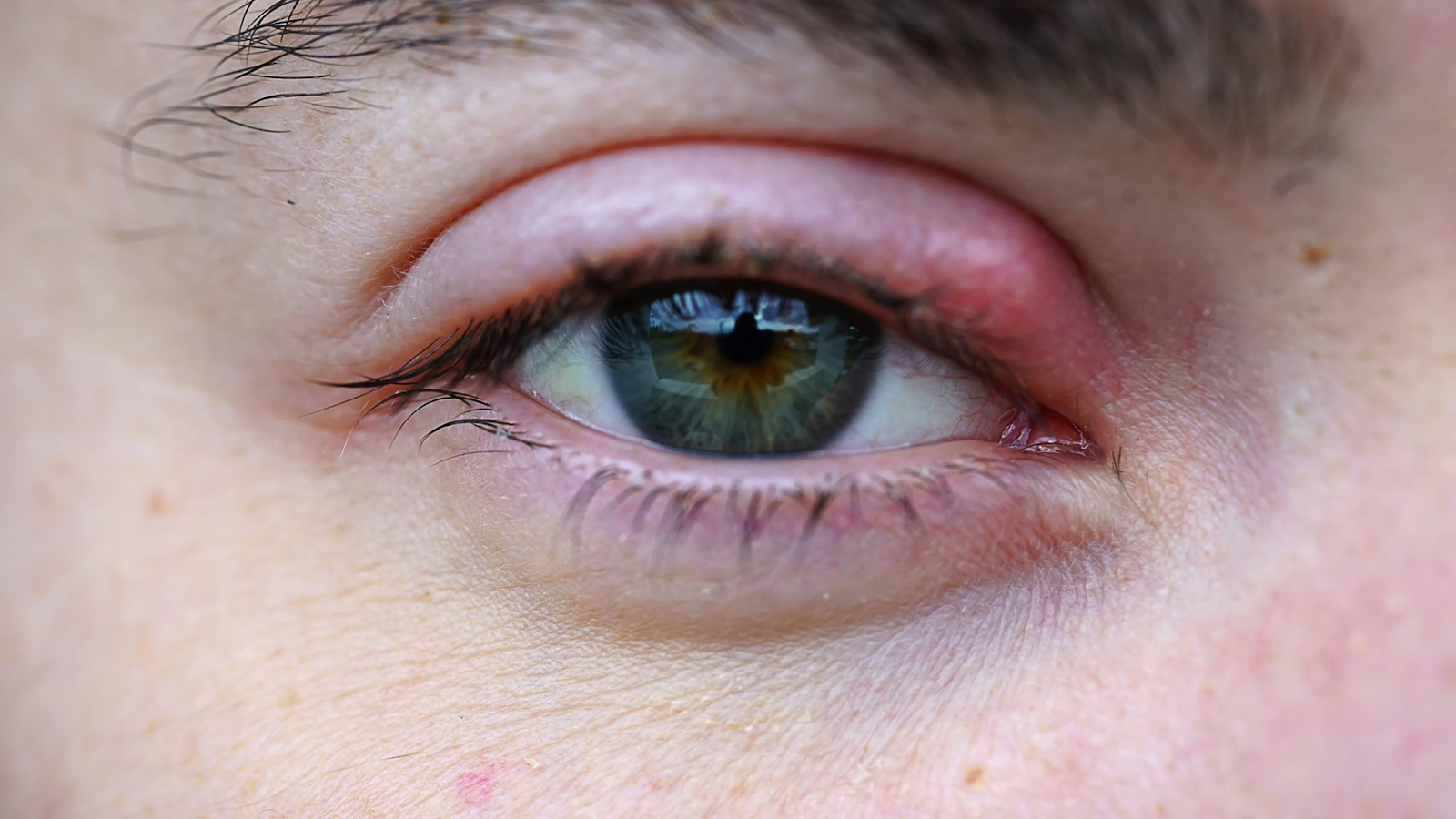Ever had a painful red bump on your eyelid that won’t seem to go away? You’re probably experiencing a common eye disorder known as a Stye. In this blog post you will find all the information needed to identify and treat a stye.


What is a Stye?
A stye (also referred to as a sty, stye eye, or eye pimple) is a small, red bump typically found around the eye. Styes can be painful and cause irritation in your eye. Eye styes are caused by bacteria or a virus that infects an oil gland in the eyelid. When these glands become infected they swell, creating the red bumps that you notice as an eye stye (or ocular hordeolum). They may be related to acne or blepharitis.
Styes usually go away on their own in one to two weeks, however you can take steps to speed up the process or prevent them from coming back. They are most prevalent among adults, but children can also get styes.
There are two kinds of styes. External styes appear on either the upper or lower eyelid. These styes are caused by an infection of the eyelash follicle. This is the most common type of stye.
Internal styes form on the inside of the upper or lower eyelid. These styes are caused by an infection of the inner eyelid gland.
Signs of a Stye:
Symptoms of a stye are easy to notice. Here is how you know if you have a stye.
Swelling of the eyelid
Increased sensitivity to light
A painful red bump near the eyelid
Tearing, crusting, and itching of the eye and eyelid
Do styes cause blurry vision?
Swelling, soreness, redness, discomfort, and even excessive tearing are among symptoms of sytes. Blurred vision can occur if the stye is big and distorts the front surface of the eyes.
Causes of Styes:
Adults and children can get a stye, and sometimes there is nothing you can do to prevent them. There are many causes of styes, and you are at increased risk if you have:
Chronic dry skin or dandruff
Chronic acne
Bad cholesterol
To Avoid Styes:
Wash your hands before touching your eyes
Disinfect your contact lenses
Avoid using old cosmetics around your eyes
Wash your face frequently
Fish oil for eye stye:
Along with its many other benefits the use of oral Omega-3 fatty acid supplements and daily warm compresses has been demonstrated to reduce the risk of stye and chalazia.
Stye and sun exposure:
Although there is no study to prove a direct link to sun exposure and eye styes, sweating can cause oil glands to get clogged up around the eyelids which could cause a stye or make an existing stye worse.
How do I Get Rid of my Stye?
Stye treatment:
It is important to treat your stye in order for it to heal swiftly and correctly. When trying to get rid of your stye, warm compresses will be your best friend. These can be done by warming a washcloth and applying gentle pressure to the affected eyelid for 10 to 15 minutes at a time. Repeat this 3-5 times a day. This is the most effective way of treating the stye.
It is also important to clean the affected eyelid. Create a very mild solution by combining equal parts baby shampoo and water, and gently wipe the affected eyelid clean of any discharge. You can also buy eyelid wipes for cleaning.
Do NOT pop or squeeze the stye. It is important to avoid touching the affected eye as much as possible.
It is also best to refrain from wearing contact lenses or applying makeup near the affected eye.
When Should I See a Doctor for my Stye?
You should visit an eye doctor if:
You have blisters on your eyelid
Your vision is deteriorating
Your eyelid feels hot
The bump is bleeding
Your eye is swollen shut
The stye won’t go away, or keeps returning
